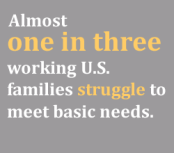February 23, 2018
A week ago I was ready to gather my family and get the hell out of this gun-crazed country. What a difference a week makes. Teenagers across the country walking out of their schools, demanding adults finally make the changes to insure their safety. Students in the Florida state house as lawmakers refuse to ban assault weapons. Kids begging President Trump to “do anything” as he held a crib sheet reminding him to act empathetic. Children throwing their bodies on the wheel and the ground in front of the White House. High school juniors going toe to toe with Senator Marco Rubio about his NRA allegiance, fearless in their contempt. It’s enough to make an old geezer like me think there might be some light at the end of the long dark tunnel.

A week ago it felt like America was destined for a pointless mass shooting each week as another gun-male took his pathetic anger out on more innocent civilians. Then a girl named Emma Gonzalez channeled the rage of a nation held too long under the terroristic threat of the National Rifle Association. She didn’t blink and she didn’t bow. It was the tipping point. This student of Marjory Stoneman Douglas High School who survived the worst this country has to offer stiffened her spine and single-handedly opened the floodgates of frustration and fury and put the NRA on the back foot.
Let’s just get this out there before this becomes about the “gun debate.” The NRA doesn’t care about the Second Amendment. I doubt most of its members even really know what the Second Amendment says. The NRA cares about guns sales. They are a lobbying organization for gun manufactures who depend on utilizing any tactic to ramp up weapon purchases. “Obama is gonna take away your guns!” “Hillary wants to repeal your right to carry a weapon!” “The only thing that stops a bad guy with a gun is a lots and lots of good guys with guns!” “Buy a gun for everyone in your family! Buy three!”

The perfect example of this push to sell more guns to a freaked-out America is this moronic call to arm the teachers. This “solution” is even coming from our idiot-in-cheif in Washington. Besides the fact that the NRA spent over $31 million to get the “billionaire” elected, I would bet half of that in cash that Trump has never even fired a gun. I’m a teacher and I’ve actually fired a gun. Lots of them. In fact, I had training with the FBI on some the weapons that are being debated right now. I feel completely comfortable firing a Heckler & Koch MP5 submachine gun but not inside the hallways of a campus full of screaming students.
What these NRA kooks ignore is that the majority of these mass shooter gun-males are on a suicidal mission to “go out on their feet in a blaze of glory.” As long as they take out a few kids before Professor Rambo shows up, they’ve achieved their goal. The thought of a well-armed faculty is not a deterrent, it’s an incitement.

That’s why the voices of Emma Gonzales, David Hogg, Cameron Kasky, Delaney Tar, and all the other Lakeland, Florida students are so powerful. They don’t have time for the latest round of pointless bullshit from our “leaders.” Their lives are literally on the line. The march they organized (within one week of the slaughter of their classmates) on March 24 is being called the “March for Our Lives” and it will be the first real expression of the collective will of the post-millennial generation, Generation Z, and it’s going to be a game changer.
This fall, the babies born in Y2K will be heading off to college. Those 18 and younger, make up the most diverse and plugged-in generation ever. Most of them can’t vote yet, but don’t think that will quell their political voice. Look at how they’ve turned the tide in one week. The NRA is now public enemy number one (no matter how loudly Wayne LaPierre screams about “SOCIALISM!”). I pity any politician that has taken NRA blood money. Sen. Dean Heller (R-Nev.) took $122,802 from the NRA and should be shamed from office in November. Let their gun money hang like an albatross around their necks.

We social movement scholars put a lot of weight on 1968 as a watershed year. Yeah, the student uprisings and unrest facilitated the election of Richard Nixon and six more years of the Vietnam War. But it also gave us the 26th Amendment, insuring that 18, 19, and 20 year-olds would forever have meaningful political power. 2018 could be Generation Z’s 1968, hopefully without all the assassinations. This is my daughter’s generation and, if she is any barometer, their energy will drive these old men into submission.
From #metoo to #neveragain, #thetimestheyareachangin. Get ready you old people, the kids are not alright and they are not going to wait for you to get your shit together. Your old road is rapidly aging. I’m ready to lend a hand. What about you? What side of history do you want to be on? These children can’t do any worse than we have.
























